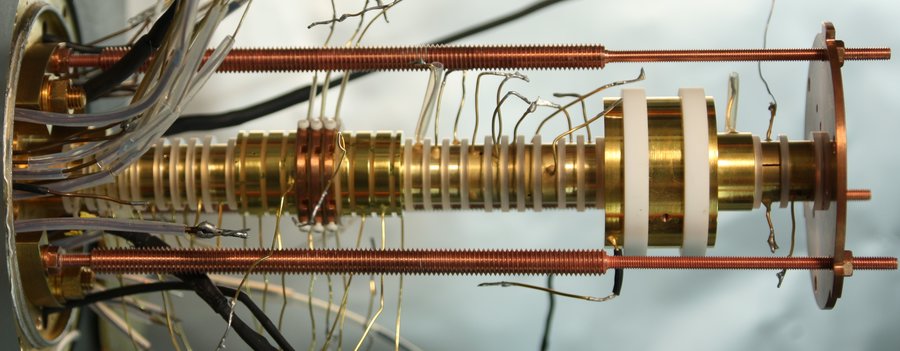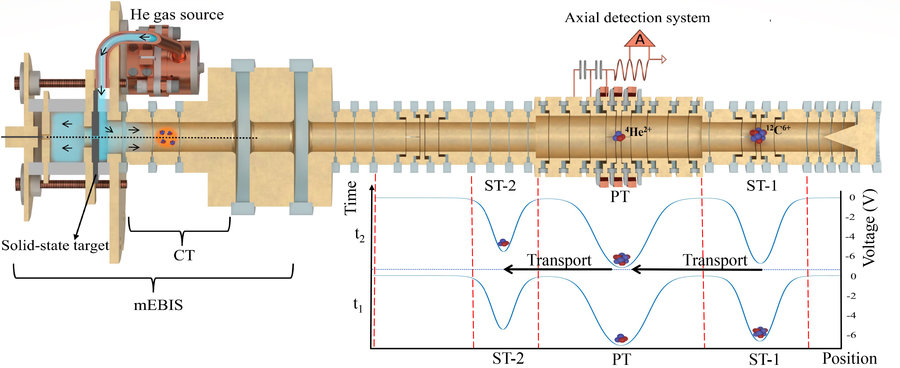High-precision measurement of the alpha particle mass in an ion trap
18.09.2023 |
Using the LIONTRAP setup in Mainz, a team of researchers from the GSI Helmholtzzentrum für Schwerionenforschung in Darmstadt as well as the Max Planck Institute for Nuclear Physics and the University of Heidelberg have succeeded in determining the mass of helium-4 nuclei, also known as alpha particles, with a precision of eleven digits. The results of the measurements are published in the scientific journal Physical Review Letters. Precision mass measurements with Penning traps will also play a role at FAIR in the future.
Light atoms, such as hydrogen or helium, play a special role in physics. They have only few electrons, which means their spectra can be calculated using our fundamental theories to exceptional precision. For this purpose, the precise knowledge of their properties, such as their mass, is essential. The atomic mass of helium-4 measured in the current experiment can for example be used to determine the mass of the electron, an important fundamental constant. Measurements in this mass range performed by different research groups have been inconsistent in the past. The current Penning-trap-based precision measurement significantly boosts the reliability of our tabulated fundamental constants.
Penning traps, in which individual charged particles can be confined for long periods of time using electric and magnetic fields, have proven to be precision scales for ions. The trapped particle performs a characteristic circular motion in the trap that depends on its mass — heavy particles oscillate more slowly than light ones. If two different, single ions are measured one after the other in the same trap, the ratio of their masses can be determined exactly.
To perform the helium measurement, the scientists used the so-called LIONTRAP (Light-Ion Trap), located at the University of Mainz and developed and built within a collaboration of the Max Planck Institute for Nuclear Physics and GSI. In the 3.8 Tesla strong magnetic field of LIONTRAP, the stored helium nuclei moved on circular paths with a radius of about ten micrometers. Carbon ions, which were also trapped, served as a mass comparison.
As a result, the researchers obtained the mass of the helium nucleus to 4,001 506 179 651(48) atomic units, with the number in parentheses indicating the uncertainty of the last digits. This result has an accuracy 1.3 times greater than the current literature value but deviates from it by 6.6 standard deviations. Additional measurements of, for example, helium-3 systems are planned for the future to resolve the inconsistencies with measurements from other research groups.
In the future, precision mass measurements with Penning traps will also be employed at the FAIR facility currently under construction at GSI. With aid of the HITRAP ion trap setup, which is part of FAIR’s APPA experiment pillar, it is planned to determine the binding energies of electrons in heavy ions with different charge states to test quantum electrodynamics. Further trap experiments in the NUSTAR pillar want to measure nuclear binding energies to test nuclear models for the synthesis of chemical elements in our universe. (CP)
















